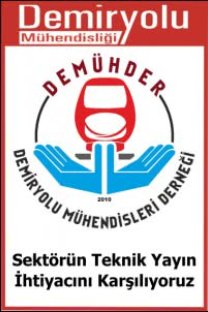Metro AC CER Güç Dağıtım Sistemlerinde Yük Paylaşımının Modellenmesi
Türkiye’de, Büyükşehirlerdeki trafik sorununa çözüm olarak raylı sistemler gibi kendisine ayrılmış yol üzerinde hareket eden toplu taşıma araçları tercih edilmektedir. Raylı sistemler, taşıma kapasitesi ve düşük maliyetli enerji tüketimi nedeniyle gelişmiş ülkelerde en çok tercih edilen toplu taşıma türüdür. Artan taleple doğru orantılı olarak enerji ihtiyacı ve güç kaybında da bir artış vardır. Bundan dolayı raylı sistemlerin proje tasarım aşamasındaki güç akışı analizi kritik önem arz etmektedir. Güç akış analizi ile raylı sistemlerde kullanılacak ekipmanlar (kablo kesiti, OG hücresi, CER transformatör gücü, yük ayırıcı ve kesiciler vb) ve bu ekipmanların teknik özellikleri belirlenir. Bu makalede M5 Üsküdar – Yamanevler Sürücüsüz metro hattında güç akış analizi, alternatif işletme senaryoları için yapılmıştır. Bu çalışmada ETAP (Elektriksel Geçici Rejimve Analiz Programı) yazılımı kullanılarak elde edilen benzetim sonuçlarına göre, güvenli ve sürdürülebilir güç akışı için en kötü durumlar gözönüne alınarak çözümler sunulmuştur.
Load Sharing Modelling in AC Traction Power Distribution Systems of Urban Metros
In Turkey, as a solution to traffic problems in metropolitan areas public transportation that travel on the guided way such as rail systems is preferred. Railway transport is the most preferred type of public transport, as well as its carrying capacity and low-cost energy consumption in developed countries. Therefore, the demand for rail transport has been increasing significantly over the years in proportinoal to increasing urban population. There is also an increase in energy consumption and accordingly power loss in proportion to increasing demand. Therefore, power flow analysis of the rail systems in the project design phase is critical.. By means of AC power flow analysis, equipment to be used in rail systems (cable cross section, MV switchgear, transformer power, load separator and breakers, etc) and the characteristics of these equipments are determined. In this study, power flow analysis is performed on M5 Üsküdar – Yamanevler driverless metro line. According to the simulation results obtained by using ETAP(Electrical Transient and Analysis Program) software, solutions are provided considering the worst cases for the safe and sustainable power flow.
Keywords:
Rail Systems, Energy Load Analysis, Modelling,
___
[1] Railway network key elements and main sub-systems, specification [Online] Available: http://www.merlin-rail.eu/wp-content/uploads/2012/12/MRL-WP1-D-ANS-013-06-D1_1-Railway_network_key_elements_and_main_sub-systems_specification.pdf [Accessed: 4-Ara-2019][2] UNECE, The United Nations Economic Commission for Europe, [Online] Available: www.unece.org [Accessed: 4-Ara-2019]
[3] H. Alnuman, D. Gladwin and M. Foster, “Electrical modelling of a dc railway system with multiple trains”, IEEE 18th International Conference on Environment and Electrical Engineering Palermo, Italy, 2018 pp: 1-2.
[4] “Üsküdar - Çekmeköy metro tren performansı ve CER gücü raporu”, Metro İstanbul, İstanbul
[5] A. R. Mario and G. Ramos, “Power system modelling for urban massive transportation systems” International Conference on Power System Technology 2012 pp:3
[6] H. J. Chuang, C. S. Chen, C. H. Lin, J.Y. Chen and C. Y. Ho, “Optimal expansion planning of traction substations for an electrified mass rapid transit system” , International Conference on Power System Technology,22-26 Oct. 2006 ,pp 1-7
[7] S. Su, T. Tang and Y. Wang, “Evaluation of strategies to reducing traction energy consumption of metro systems using an optimal train control simulation model”, Energies 2016, pp:2
[8] A. Belay, “Design and simulation of traction power supply system: case study of Modjo~Hawassa line” Master Thesis, The Addis Ababa University, Addis Ababa, Ethiopia, pp.4, June 2016.
[9] S. Su, T. Tang and Y. Wang “The effect of train length on determining train control regimes on inter-station” State Key Laboratory of Rail Traffic Control and Safety, Beijing Jiaotong University, pp:3
[10] N. R. Richard, K. Tristan, M. K. Fitzgerald and A. M. John, “Analyzing transit AC and DC traction power networks” [Online]. Available: https://www.apta.com/mc/rail/previous/2014/papers/Pages/default.aspx [Accessed: 4-Ara-2019]
[11] S. H. Hosseini and F. Shahnia “Load flow calculation and short circuit fault transients in ac electrified railways” ICCAS2005 June 2-5, KINTEX, Gyeonggi-Do, Korea Azarbaijan Regional Electric Company, Tabriz, Iran pp. 34-38, June 2005.
[12] N. A. Raval, Prof. S. N. Shivani, Prof. M. K. Kathariya, “Review paper on AC traction power line fault analysis and simulation”, IJSRD - International Journal for Scientific Research & Development| Vol. 3, Issue 08, 2015 | ISSN: 2321-0613
[13] C.J.Chen, Ch. H. Lin, “Optimal expansion plannign in traction substations for an electrified mass rapid transit system”, International Conference on power system tech. pp , 1-7, 2006
[14] T. Kulworawanichpong, “Multi-train modelling and simulation integrated with traction power supply solver using simplified Newton-Raphson method”, J.Mod.Transport 2015, 23(4), pp:241-251
[15] J. Zhang, M. Wu and Qi Liu, “A nowel power algorithm for traction power supply systems based on the thevenin equivalent”, energies, pp. 38–44, july.2018
[16] Y. Yuan, W. J. Yong and X J. Jian, ”Reliability evaluation of a bulk power system for the traction power supply system of a high-speed railway”, Beijing Jiao Tong University, China 2009 Annual Reliability and Maintainability Symposium, pp. 26-29 Jan. 2009
[17] Voltage characteristics of electricity supplied by public distribution systems, EN 50160: Standard 1999.
[18] EMO İstanbul Şubesi, 2008, “Akıllı sayaç yoktur, akıllı ve bilinçli insan vardır”, 3e Electrotech Dergi, 169: 64-66.
[19] Electrical Engineerign Portal, 2013. How to calculate voltage regulation of distribution line. [Online] Available: https://electrical-engineering-portal.com/how-to-calculate-voltage-regulation-of-distribution-line#2 [Accessed 12 şubat 2020].
- ISSN: 2149-1607
- Yayın Aralığı: Yılda 2 Sayı
- Başlangıç: 2014
- Yayıncı: Demiryolu Mühendisleri Derneği
Sayıdaki Diğer Makaleler
Nail KARAGÖZ, Halil İbrahim ACAR, Burhan SELÇUK
Demiryolu Ray ve Kusurlarını Tespit Etmek İçin Geliştirilen İki Yeni Yöntem
Nail KARAGÖZ, Halil İbrahim ACAR
Ulaştırma Sektöründe Dışsallıklar Üzerine Bir Araştırma
Demiryolu Yol Altyapısının Parçalanmış Atık Lastik - Kum Karışımları ile Stabilizasyonu
Seyfettin Umut UMU, Derviş Volkan OKUR
Türkiye’de Demiryolu İstasyonlarının Değerlendirilmesi İçin Analitik Hiyerarşi Süreci Uygulaması
Sinem KAYA, Fahriye MERDİVENCİ
Yeni Nesil Çevreci Kompozit Traversler
Sezgin OZDEMIR, Bekir KESKİN, Tamer EREN, Evrencan ÖZCAN
Yatar Gövdeli Demiryolu Araç Teknolojisi ve Türkiye
AHP, COPRAS ve Tamsayılı Programlama Entegrasyonu ile Demiryolu Araçlarında Bakım Planlaması
